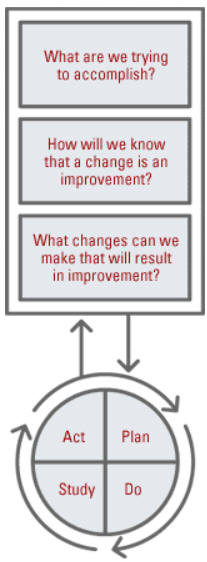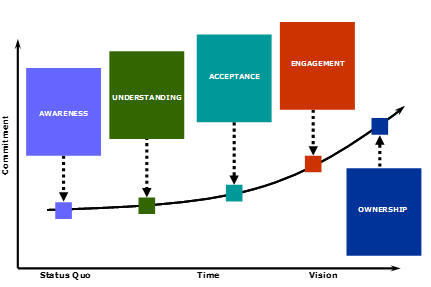|
 Cycle Improvement Cycle Improvement
Our cycle improvement methodology is proven and
tested throughout our 16 years of existence. In entails the following:
 Forming the Team:
Including the right people on a process improvement team is critical to
a successful improvement effort. Teams vary in size and composition.
Each organization builds teams to suit its own needs. Forming the Team:
Including the right people on a process improvement team is critical to
a successful improvement effort. Teams vary in size and composition.
Each organization builds teams to suit its own needs.- Setting Aims:
Improvement requires setting aims. The aim should be time-specific and
measurable; it should also define the specific population of patients or
other system that will be affected.
- Establishing Measures:
Teams use quantitative measures to determine if a specific change
actually leads to an improvement.
- Selecting Changes:
Ideas for change may come from the insights of those who work in the
system, from change concepts or other creative thinking techniques, or
by borrowing from the experience of others who have successfully
improved.
- Testing Changes:
The Plan-Do-Study-Act (PDSA) cycle is shorthand for testing a change in
the real work setting — by planning it, trying it, observing the
results, and acting on what is learned. This is the scientific method
adapted for action-oriented learning.
- Implementing Changes:
After testing a change on a small scale, learning from each test, and
refining the change through several PDSA cycles, the team may implement
the change on a broader scale — for example, for an entire pilot
population or on an entire unit.
- Spreading Changes:
After successful implementation of a change or package of changes for a
pilot population or an entire unit, the team can spread the changes to
other parts of the organization or in other organizations.
Here are some sample reports generated by our
system:



|